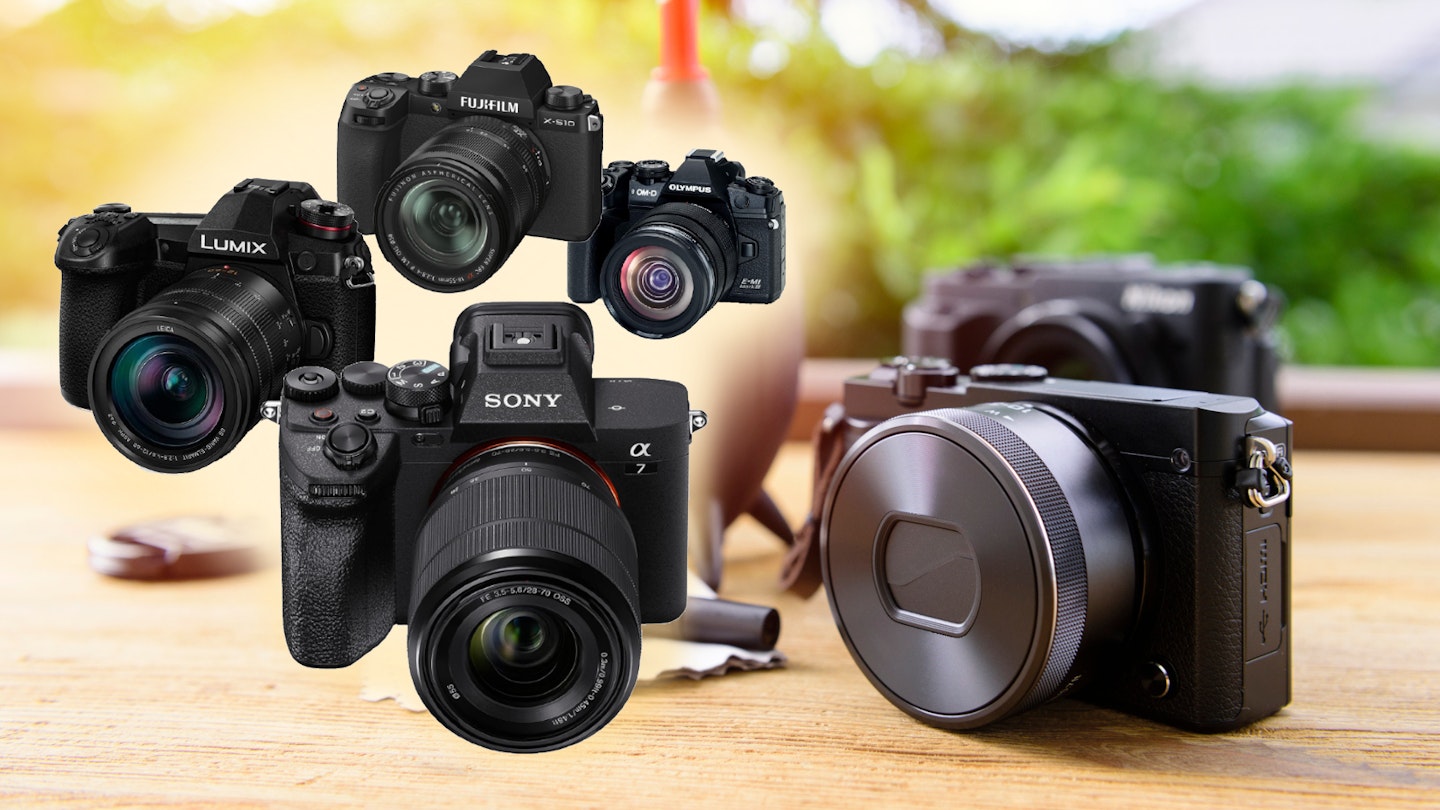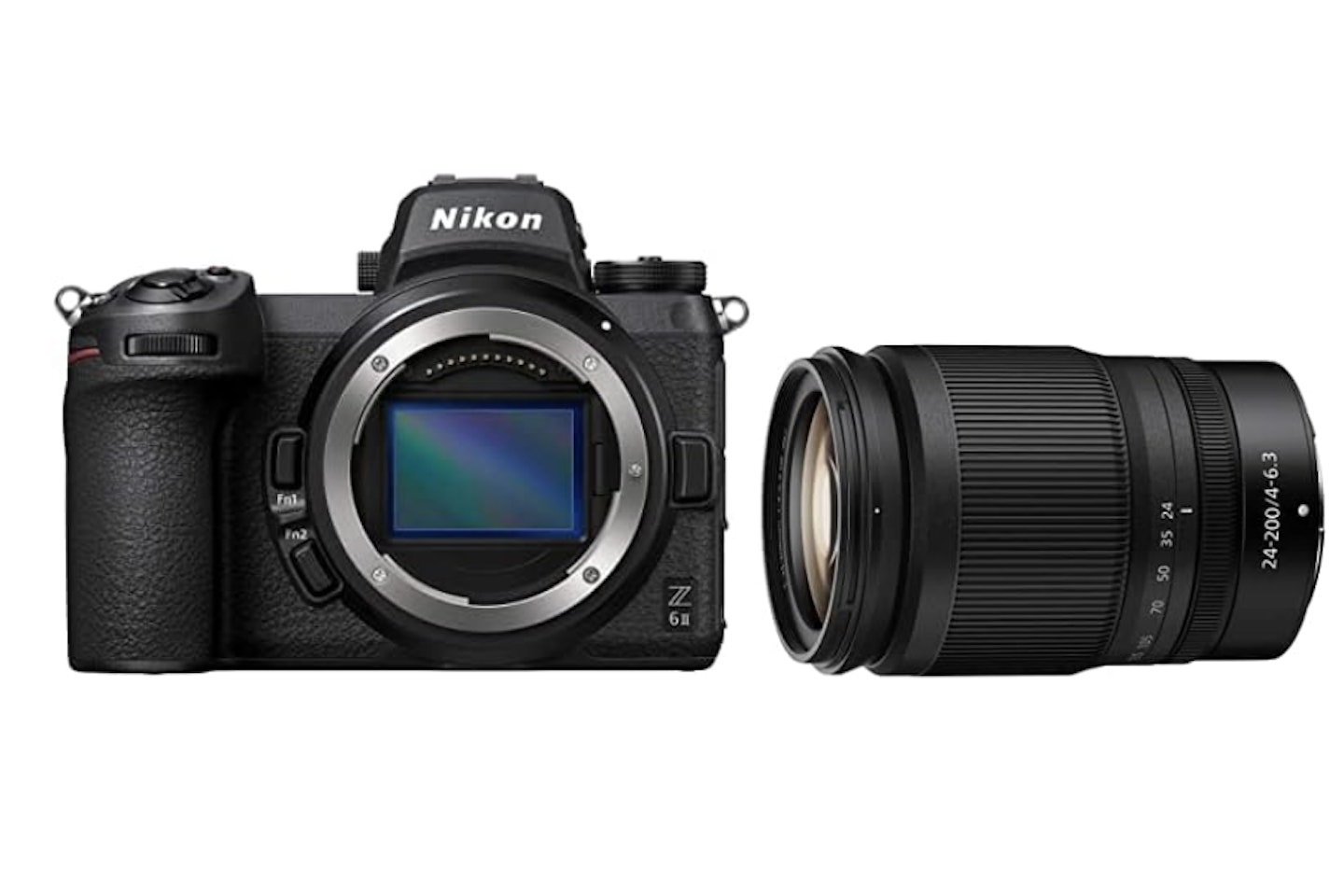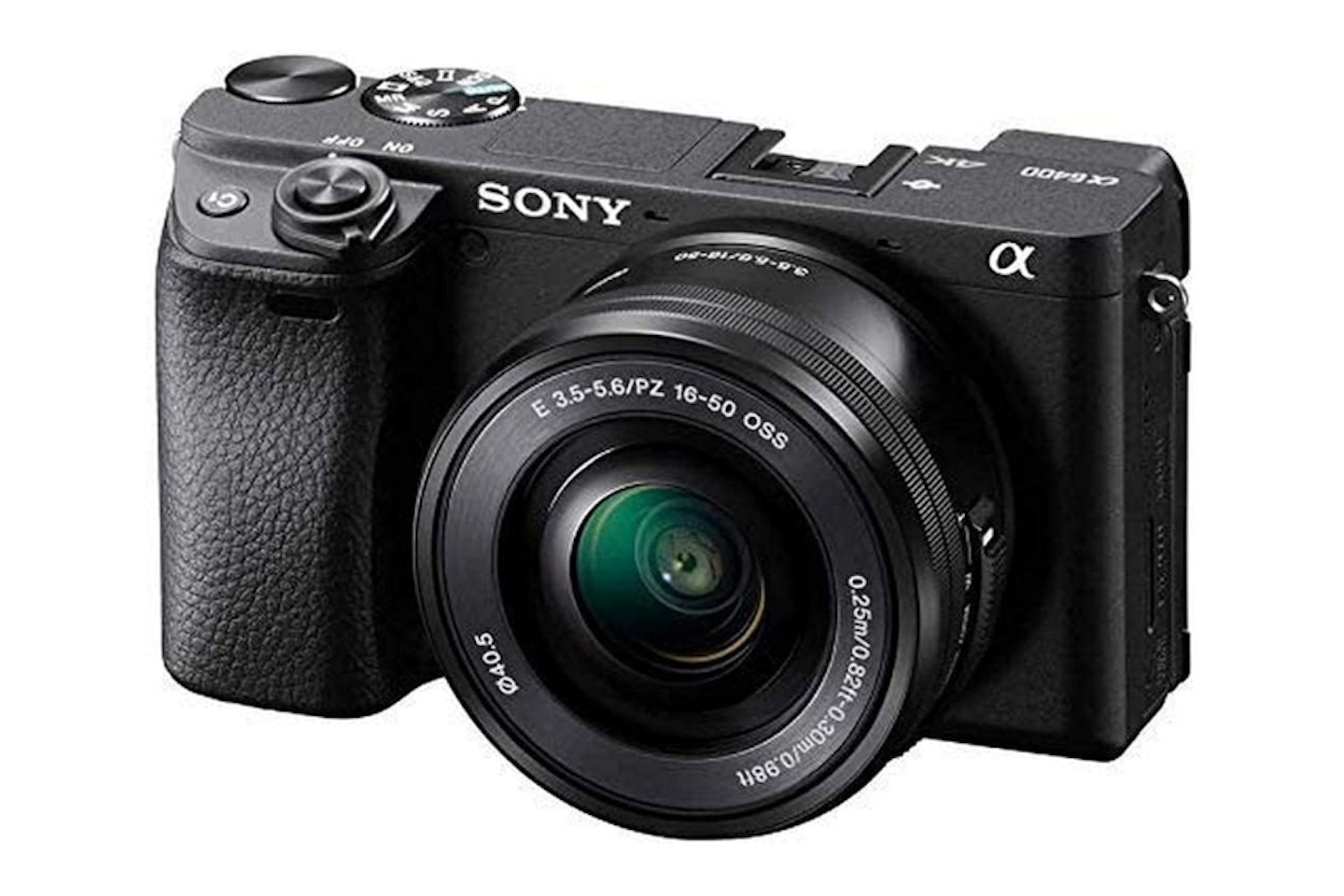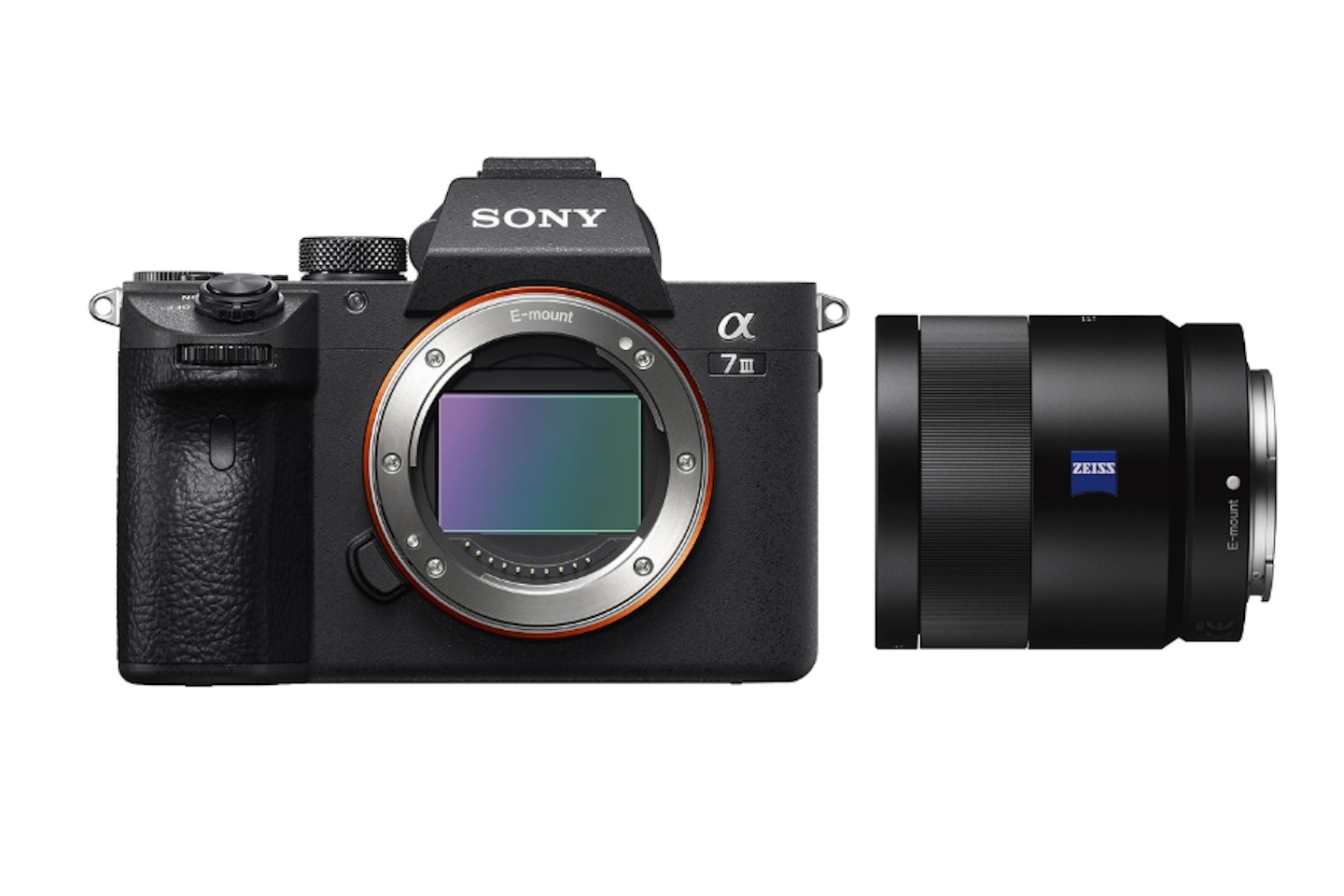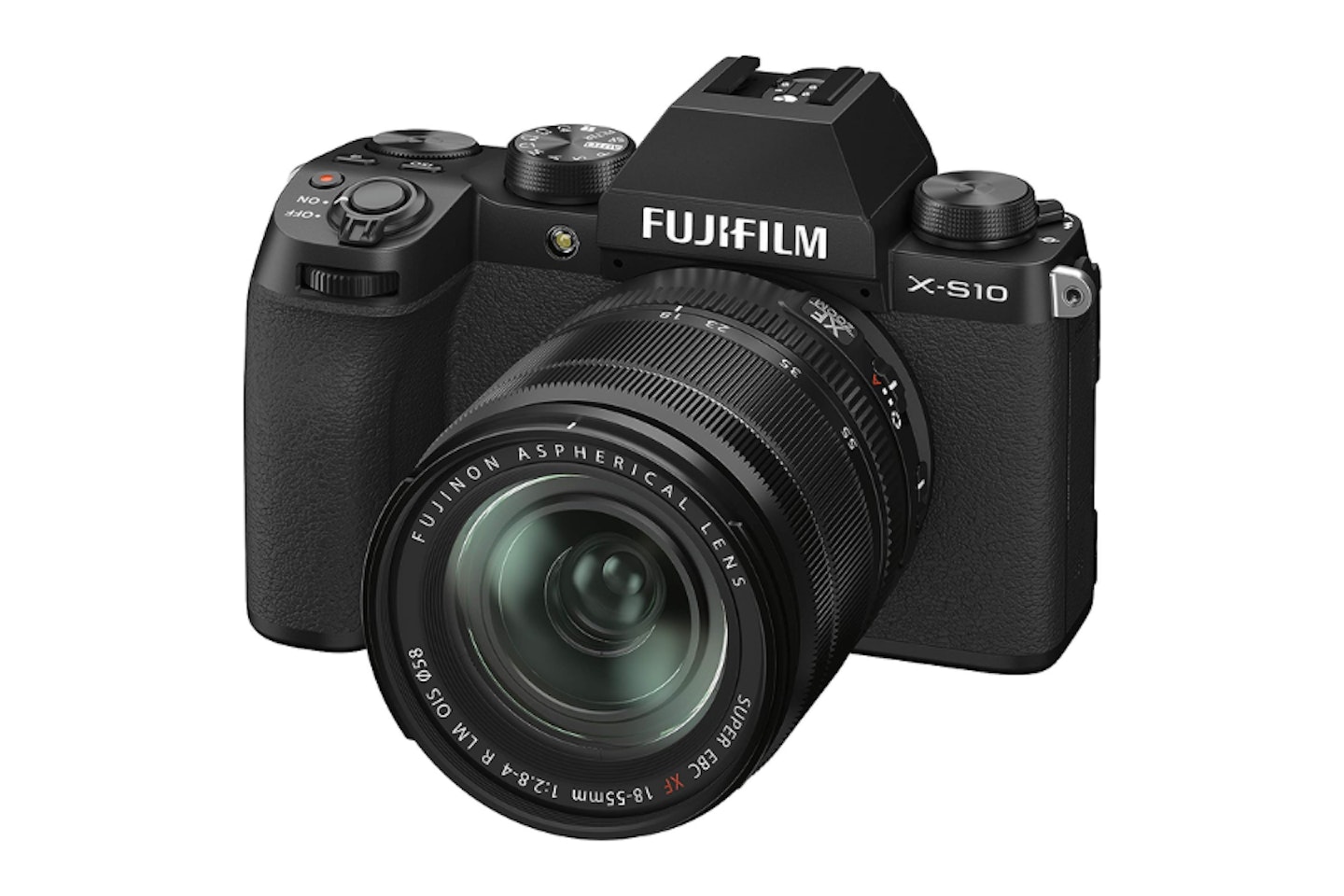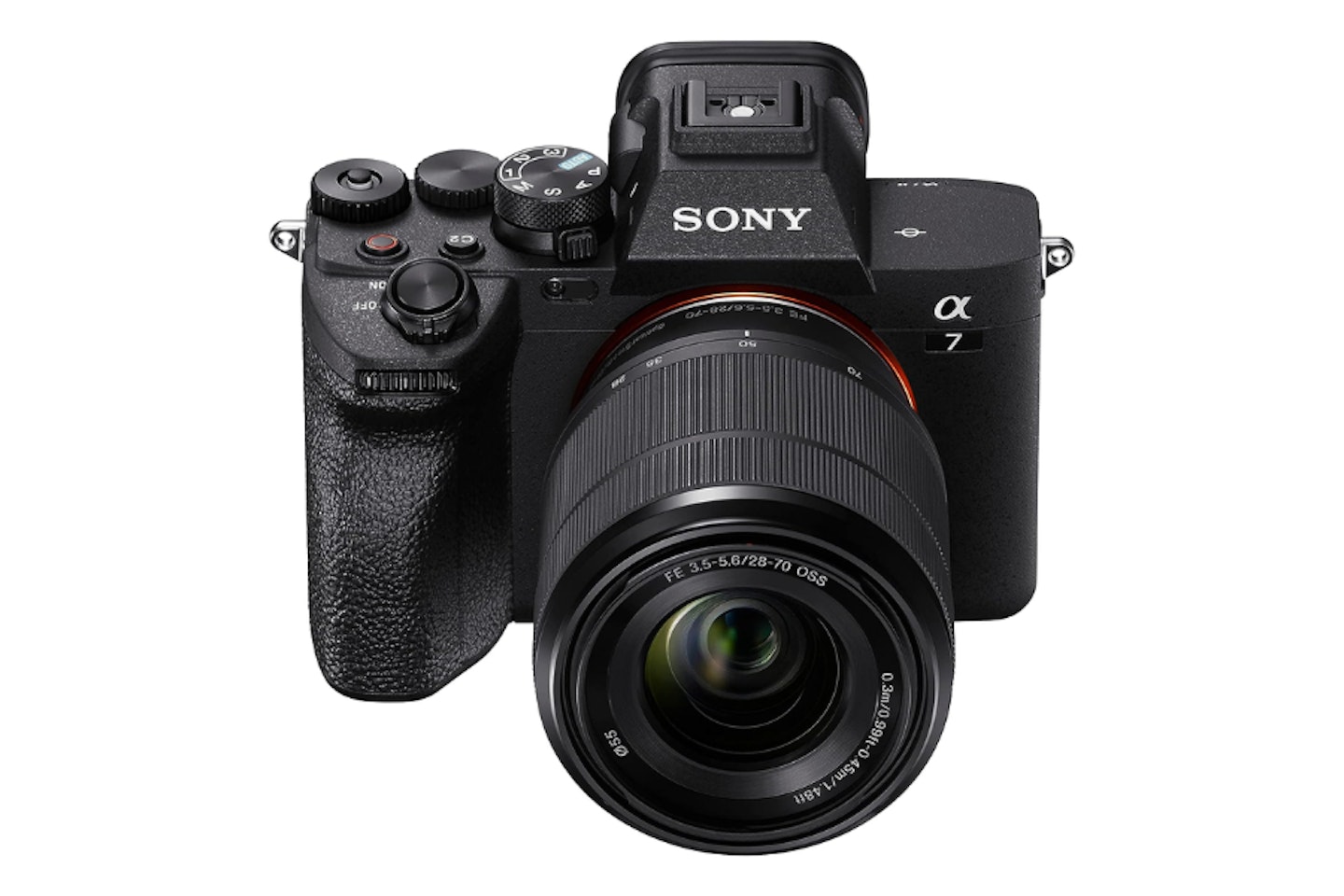Every photographer has a wishlist stacked with some of the best cameras known to man, and dream equipment like mirrorless cameras too. Despite sounding like it's lost something, the lack of a mirror is what makes it the camera of choice for many professionals.
And there's a lot more to it than just stripping components out of a budget DSLR camera and rebadging it. Making this investment is a serious step up for any photographer. As camera innovations go, this is right up there with other major milestones. Budget-wise, they may not be the best cameras for beginners; but if you can stretch to it you'll really be giving your photography a chance to bloom. So, what are mirrorless cameras, and what makes them so popular?
The best mirrorless cameras are fundamentally the same as Digital Single Lens Reflex models; based on exactly the same kind of DSLR cameras made by Canon, Nikon and the like. The Reflex is the movable mirror inside. That mirror sits in front of the sensor and reflects light through to your viewfinder. When you snap the shot, you'll hear the mirror's reflex action as it moves out of the shutter's way. In removing the mirror, they generally have a higher continuous shooting rate. Most importantly, unlike a viewfinder, what you see on the camera's screen is what you're actually going to get. It can also bring enhanced autofocus points, and improved tracking systems.
Best mirrorless cameras of 2023 at a glance:
• Best overall mirrorless camera: Nikon Z6 II - View at Amazon
• Best budget mirrorless camera: Sony Alpha 6400 - View at Amazon
• Best Canon mirrorless camera: Canon EOS 90D - View at Amazon
• Best Sony mirrorless camera: Sony Alpha 7 III - View at Amazon
You still have a range of sensor options to choose from too, from full-frame to APS-C and Micro Four Thirds. Sounds like a jargon minefield? We have you covered with our guide at the end of the article. So, whether you’re upgrading or starting afresh, our experts have selected the best mirrorless cameras for various budgets and uses. So, let's snap to it.
Best mirrorless cameras of 2024
1.
Nikon Z6 II
Best overall mirrorless camera
Description
As a brand familiar to many 35mm aficionados, Nikon is a welcome presence in the full-frame mirrorless market. The Z6 II features many significant upgrades over its predecessor, the Z6. It features a 24.5MP BSI CMOS sensor. It's that sensor that gives this a step up against the competition, as it delivers seriously impressive low-light performance. Inside there are two EXPEED 6 image processors to accelerate the camera's abilities. And speaking of speed, it can shoot continuously at up to 14 fps - amazing for fast action like sports or wildlife. A 3.2-inch tilting touchscreen will also make for convenient and comfortable shooting.
Autofocus is up to the task as well, with a 273-point phase-detect AF system. To top off the feature list, it can record 4K video at up to 30fps too. One excellent and often overlooked feature is the dual SD card slots - they're both Ultra High Speed, perfect for saving all that detail as fast as the camera can capture it. Showing how well Nikon understands the potential buyers of this camera, it also has a 3.69-million-dot OLED electronic viewfinder - ideal for anyone from a DSLR or film camera background. All in all, the Nikon Z6 II is brilliant for professionals and enthusiasts alike, delivering excellent image quality and performance. This bundle deal comes with a versatile 24-200mm zoom lens too.
Pros
- 24.5MP full-frame sensor with excellent image quality
- Two EXPEED 6 processors
- Terrific high ISO performance
- In-body image stabilization
- Dual memory card slots (XQD/SD)
- 4K video recording at up to 60fps
Cons
- No built-in flash
- No eye-tracking autofocus feature
Best budget mirrorless camera
Description
Sony left quite a gap between the A6500, its flagship APS-C mirrorless, and the A6400, but it was well worth the wait. This latest mirrorless boasts a 24.2MP APS-C sensor and also includes the recent AF firmware update to give real-time tracking and improved eye and animal AF - a boast only rivalled by the full-frame A9. Beyond a class-leading AF system, you also get a compact body with a maximum of 11fps continuous shooting, ISO 100-32,000 and time-lapse movies - a new addition to the Alpha range. The 425-point phase-detection AF system is stunning, and the tracking abilities are world-class, despite costing under £1000 with a kit lens.
It also boasts some very respectable video specs, such as 4K video at 30fps, or 1080p Full HD at 120fps. You can shoot in V-Log, increasing the dynamic range and allowing for colour grading, as well as using an external mic jack for superior audio. It also features a front-facing flip-up touchscreen. However, when raised, it makes the hotshot unusable, so mounting a shotgun mic may prove a bit tough without a premed cage. That small issue aside, and the fact that it lacks the in-built image stabilisation of the A6500, the A6400 is a brilliant choice for budget-seeking stills and video shooters.
Pros
- Highly advanced autofocus
- Amazing resolution and detail
- 180-degree tilting touchscreen
- Built-in flash and hot shoe for external flash
- Compact and lightweight
Cons
- No built-in image stabilization
Best Canon mirrorless camera
Description
Although you could spend an awful lot more on a mirrorless Canon camera, this mid-range DSLR is almost too good for the price. Not only does it boast a brand new 32.5MP APS-C sensor - one of the biggest resolutions offered by Canon - it also delivers a decent ISO range of 100-25,600. All of this, plus a 10fps continuous shooting speed, is excellent on a camera that costs less than £1,500.
Thankfully, Canon's wide range of lenses for this camera suits all budgets too. For anyone looking to shoot video, you have 4K, and that's supported by the brilliant Dual-Pixel AF system. This gives you a traditional focus system using the viewfinder or a mirrorless experience through the LCD. You can't go wrong with a camera as well-specced as this, especially at this price point.
Pros
- Great battery life
- Excellent range of lenses available
- High resolution for an APS-C
Cons
- AF tracking isn't class-leading
- ISO is respectable, though isn't the best on this list
Best Sony mirrorless camera
Description
The A7 III has earned several camera of the year awards since launch and it's easy to see why. The spec makes it possibly the most well-rounded camera in existence. In fact, the only reason it doesn't take our top-spot here is a very slightly lower pixel count - but only just. You'll get a 24.2MP full-frame BSI sensor with a 100-51,200 ISO range - nothing short of amazing for low-light performance. There's also a 693-point phase-detect AF system lifted straight from the flagship A9.
In terms of features, the camera's eye-tracking autofocus, and real-time animal Eye AF, are just indispensable. As well as glorious-looking photos, you can also shoot 4K video at 30fps, or 1080p Full HD at 120fps. As with the Z6, you can record 4:2:2 10-bit externally and shoot with S-Log 2, S-Log 3 and even HLG for an instant HDR workflow. You even have a 5-axis in-body image stabilisation system. Sure, the EVF may be a touch lower than the best in class, and the 3in 921k-dot touchscreen isn't something to write home about, but it does boast dual SD card slots and 10fps continuous shooting speed. The amount of Sony tech packed inside the A7 III means it's more than worth the investment.
Pros
- 24MP full-frame CMOS sensor
- 693-point phase-detection autofocus system
- 5-axis in-body image stabilization
- 4K video recording at up to 30fps
- Great range of lenses available
Cons
- Only one card slot is UHS-II
- No built-in flash
Best Fujifilm mirrorless camera
Description
The Fujifilm X-S10 is one of those cameras that blends traditional 35mm looks with the sophisticated feature set of the most modern cameras here. Despite not being weather-sealed, the textured body and wide grip make this a reassuring camera to hold. The 26.1MP APS-C sensor is a real performer, capturing everything with clarity and is a seriously impressive resolution. Usability is well looked after too, thanks to the rasi-angle 3.0-inch 1.04-million-dot touchscreen. Once again, we see the inclusion of a high-definition electronic viewfinder - harking back to film cameras and DSLRs. It's not the first camera here to sport in-body image stabilization, but having the 5-axis version really smooths everything out without a hitch.
The 425-point hybrid AF system isn't the fastest in terms of response time, depending on your style of shooting, but good enough for most. You also have a 10fps continuous shot rate, a built-in flash, and a hot shoe for an external flash if you prefer. There is only one ultra high-speed memory card slot though, but with enough high-capacity cards in your kit, this shouldn't be an issue. Overall, the Fujifilm X-S10 is both versatile and a solidly built camera with more than enough bells and whistles to satisfy the most creative shooter.
Pros
- Great low-light performance
- High-speed burst modes
- 5-axis in-body image stabilization
- Vari-angle touchscreen
- Compact and lightweight
- Plenty of lens choices
Cons
- No weather sealing
- Some users say the autofocus tracking performance could be better
Best Olympus mirrorless camera
Description
Olympus is another camera brand that will evoke all sorts of nostalgia for old-school photographers. Despite having possibly the most unwieldy model name in history, the OM-D E-M1 Mark III combines the sort of exceptional image quality you'd expect with cutting-edge tech. And the choice to use a Micro Four-Thirds 20.4-megapixel sensor is inspired - buying room for some seriously useful upgrades. The TruePic IX processor supports a continuous shoot rate of 15 fps and although we would have preferred to see two, thankfully one of the SD card slots is UHS.
Aside from the weather-sealed magnesium alloy body, a standout feature for anyone out and about is the in-body 5-axis image stabilization. So, handheld or not, everything will be rock-solid, sharp detailed. The O-MD Mark III's Pro's focus stacking mode is essential for anyone looking to capture traditionally impossible depth-of-field shots. The icing on the feature cake is the handheld High-Res Shot Mode that will combine 8 photos into one, for a staggering 80MP single photo. If you want a traditional-looking mirrorless camera that packs some technical clout, this is it.
Pros
- Incredible image stabilization for both still and video
- Excellent image quality, even in low light
- High-speed continuous shooting up to 15 fps
- Weatherproof and dustproof design
Cons
- Uses a somewhat dated 20MP sensor
Best Panasonic mirrorless camera
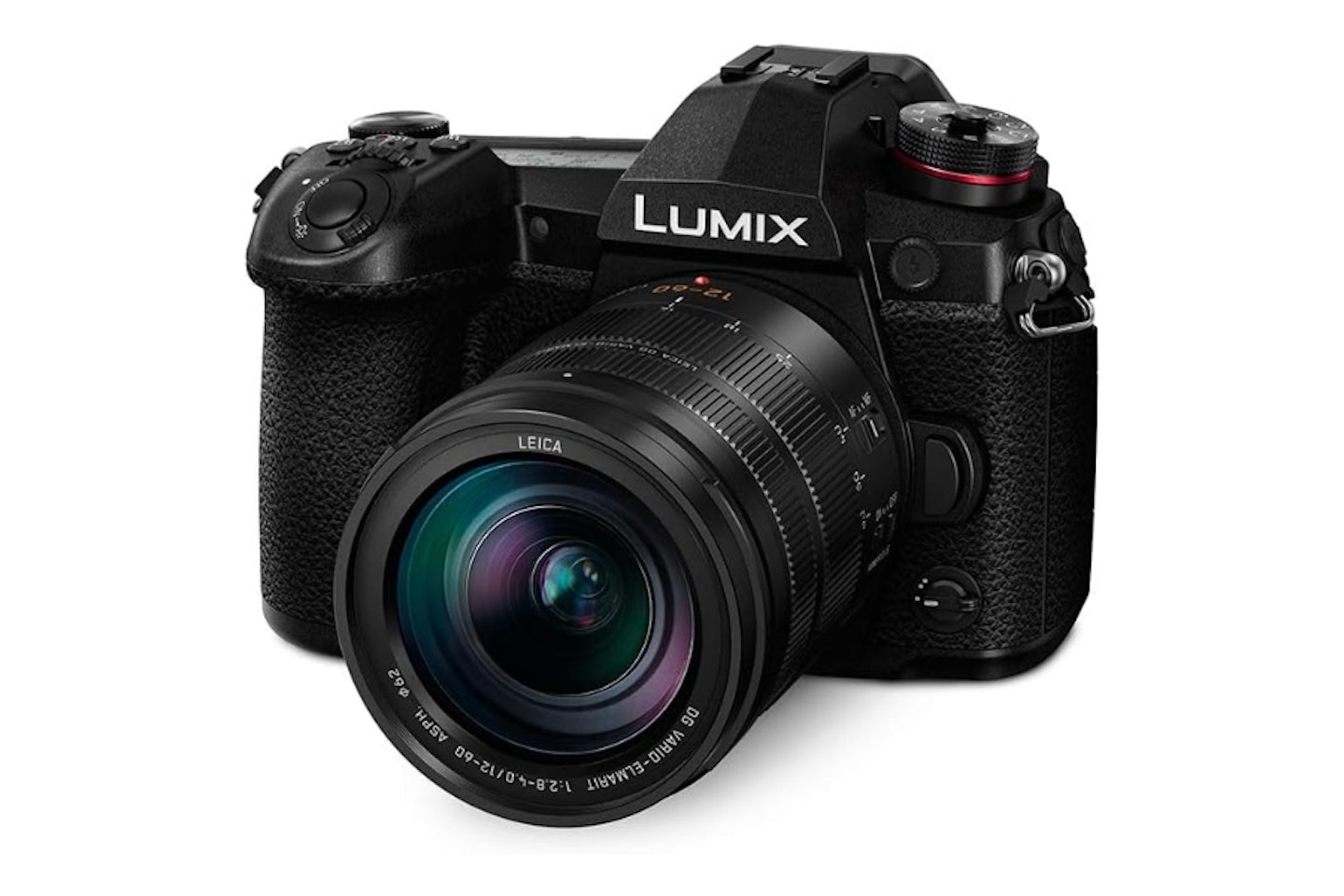
Description
Continuing on the Micro Four Thirds trail, the G9 from Panasonic has built a reputation that follows in the footsteps of the Panasonic Lumix GH5 that we reviewed. This compact, yet pleasingly easy-to-hold camera contains a comprehensive feature set. Not only do you have 5-axis Dual I.S II image stabilization to keep things steady, but a 20fps continuous shooting with continuous AF is also almost unparalleled on this list. Much like the Olympus OM-D, the G9 has a photo mode for capturing 80MP stills - but this time from a 6K video. You do get an electronic viewfinder with 3.68 million dots alongside the 3-inch touchscreen. But, we think the range of focus modes is what makes this camera really special: Single AF, Continuous AF, Tracking AF, Face and Eye Detection AF. Just, wow.
The LUMIX DC-G9's 20.3-megapixel sensor is more than up to the job too, proving that Micro-Four-Thirds is becoming ever more capable and a serious compact alternative for many photographers. Lastly, and crucially for anyone looking to use this crop sensor for nature or wildlife shoots, the rugged build is weather-sealed - perfect for your outdoor adventures.
Read our full Panasonic Lumix GH5 review here
Pros
- 20.3-megapixel sensor
- Dual I.S. 2 image stabilization
- 20 fps continuous shooting with electronic shutter
- 4K/60p video recording
- Dual UHS-II SD card slots
- Tilting touchscreen
- Weather-sealed body
Cons
- No in-body flash
Best full-frame mirrorless camera
Description
There's only one reason this stellar shooter didn't sweep the board in our rundown of the best mirrorless cameras, and that's the price. But when you find out what the Sony Alpha 7 IV can do, you'll see why it's worth it for anyone with a deep enough pocket. A true powerhouse for photographers and videographers, the astonishingly high 33-megapixel full-frame sensor delivers unsurpassed image quality and dynamic range. And that quality also extends to the 4K video capacities - recording up to an impressive 60fps.
But there's no point in capturing all that detail if things aren't sharp - as you'd expect, the auto-focus systems here are equally stunning. There are 693 phase-detection AF points and 425 contrast-detection AF points. Extended focus-related features are Real-time Eye AF and Real-time Tracking. Once you use these capabilities, you'll never go back - your shooting style will be more fluid, particularly with action photography. Thankfully, all of this photographic goodness is housed beautifully inside a dust and moisture-resistant body with plenty of customizable controls. Aside from a slightly lower continuous shooting rate compared to others here, this is an incredible camera.
Pros
- 33MP BSI CMOS sensor
- Excellent in low light
- Improved dynamic range
- 4K 60p recording
- Tilting touchscreen LCD and electronic viewfinder
- 5-axis in-body image stabilization
Cons
- Only one card slot is UHS-II compatible
- Relatively slow continuous shooting speed (10 fps)
Best mirrorless cameras of 2024: Buyer's guide
Mirrorless cameras VS DSLRs
Is a mirrorless camera better than DSLR? In purely mechanical terms, yes. Doing away with the mirror means a lighter body and faster operation. After that, it all depends on how and where you will be using your camera. After all, you may not need the benefits that mirrorless can bring depending on your shooting style and subject matter.
Although DSLR cameras are renowned for their high-quality shots and optical viewfinders, the advancements in this new technology are mind-blowing. You can now buy a mirrorless camera that is far lighter, faster, more compact and with much higher video quality. There are far more lenses on the market than a couple of years ago too, and the selection is only growing.
When to opt for a mirrorless camera
Obviously, the key benefits (speed, weight and size) make them great for travel shoots or any kind of fast and agile photography. If you're the sort of snapper who likes to keep up with the latest tech, mirrorless isn't a fad. It's here to stay. It modernises the build, speed and size of traditional DSLRs. And all of that changes the way photographers use their cameras. The space and weight savings also open up new opportunities for further enhancements - like speedy eye-tracking autofocus and more.
Choose your lenses wisely
It's best not to assume that your existing lens collection will be usable on your new mirrorless camera body. Always double-check that there are compatible adapters available. And, if you're moving wholeheartedly into the world of mirrorless, choose a camera with a great range of available lens types that suit what you love to shoot.
Accessorise your new kit
After splashing out on one of the best mirrorless cameras, don't skimp on essential accessories, particularly if you're buying gear for a beginner photographer. You'll probably already have a vast collection of memory cards, but high-speed cards are essential, particularly if you're going to take advantage of that increased continuous shoot rate or 4K video. One potential downside of this technology is that battery life is shorter than some DSLRs, simply because the screen is used much more than any viewfinder. And don't forget extra batteries for those longer photography excursions out and about.
Plus, of course, if you're lugging your new kit around on adventurous shoots (or even on city breaks or day trips) don't forget a weatherproof camera bag or backpack.
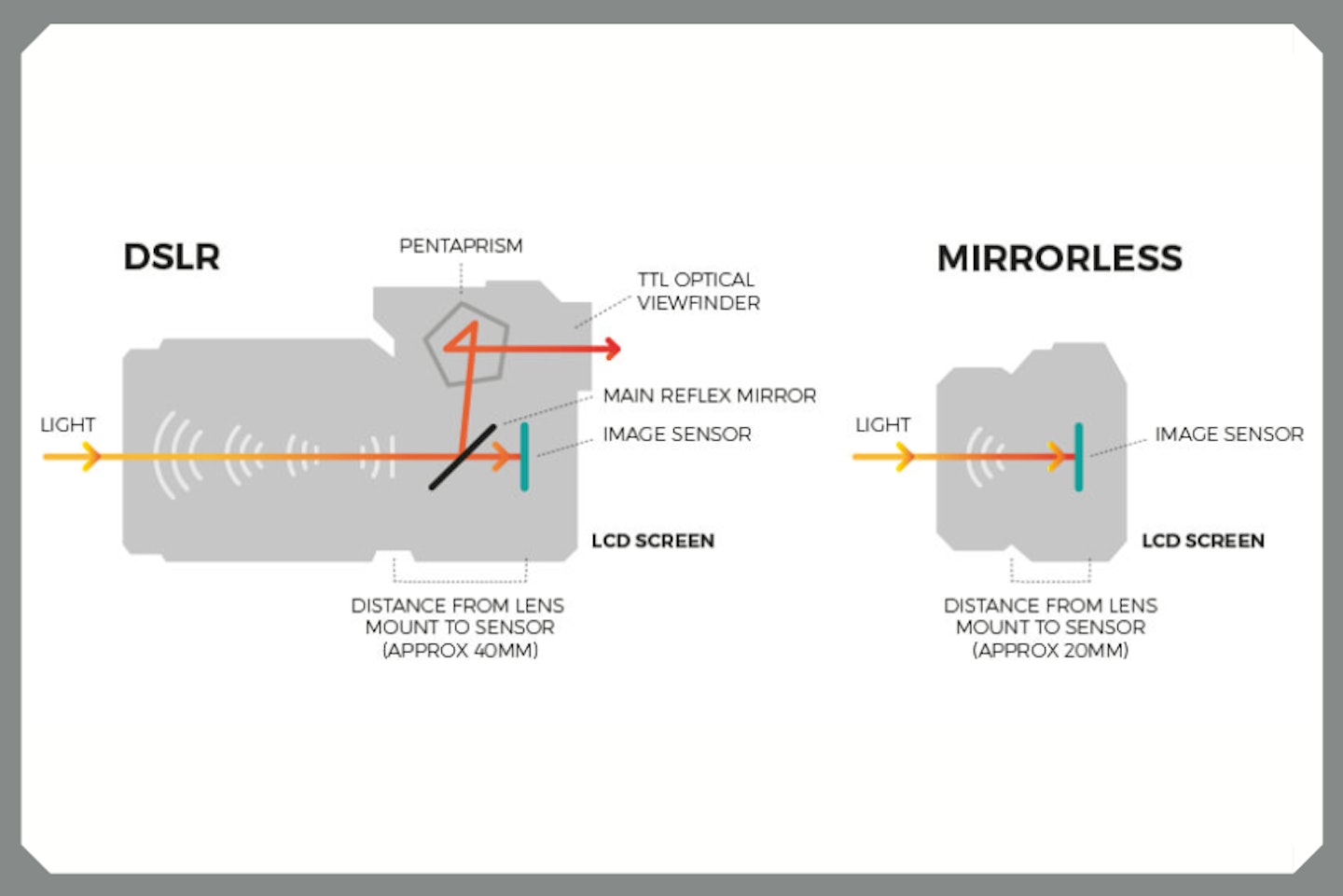
Best mirrorless cameras of 2024: FAQs
How do mirrorless cameras work?
As mentioned briefly above, the fundamental change between a standard DSLR and a mirrorless camera is just what you'd expect: there's no mirror between the lens and the sensor. The mirror would normally reflect what the lens sees up and through to the viewfinder. That would give the photographer a naked-eye view of what lies in front of the lens. But, as with most digital cameras, how that shot would actually turn out once the camera takes the shot is not necessarily the same as the image in the viewfinder.
A mirrorless setup will show you, live on screen, exactly what your lens is pointing at plus any settings you've made to affect the image. This takes the guesswork out of tweaking ISO, depth of field and more as you shoot. Also, a DSLR must move that mirror out of the way of the sensor and synchronise with the shutter. But with no mirror to move, a camera's continuous shooting rate can be a lot faster. With no mirror, continuous autofocus and other features have also seen some enhancements. They're quieter and a little lighter too.
Are mirrorless cameras better for video?
As these cameras use the display screen by default, this can be a little more convenient than a DSLR. DSLRs often put the screen into standby mode in preference of the viewfinder. Given that many of these cameras come with the same APS-C or full-frame sensors as DSLRs, video image quality is top-notch. Although there are dedicated video cameras, such as action cameras, they often simply can't compete with the combination of lenses and sensors to be found in DSLR or mirrorless models.
But, the main reason why mirrorless takes the videography crown is those advances in lightning-fast, smooth autofocus and tracking systems. Anyone who has shot video on a DSLR with a stepper motor lens will appreciate how important the accuracy and reaction time is of any AF system.
Do mirrorless cameras need special lenses?
The answer will vary over time as camera designs develop. In short, if you have a collection of DSLR lenses all is not lost. Many adapters exist to mount these onto your mirrorless camera. However, the reverse is not an option. Most models come with specially designed lenses to suit that type and brand of body, and those cannot currently be adapted for use on a standard DSLR.
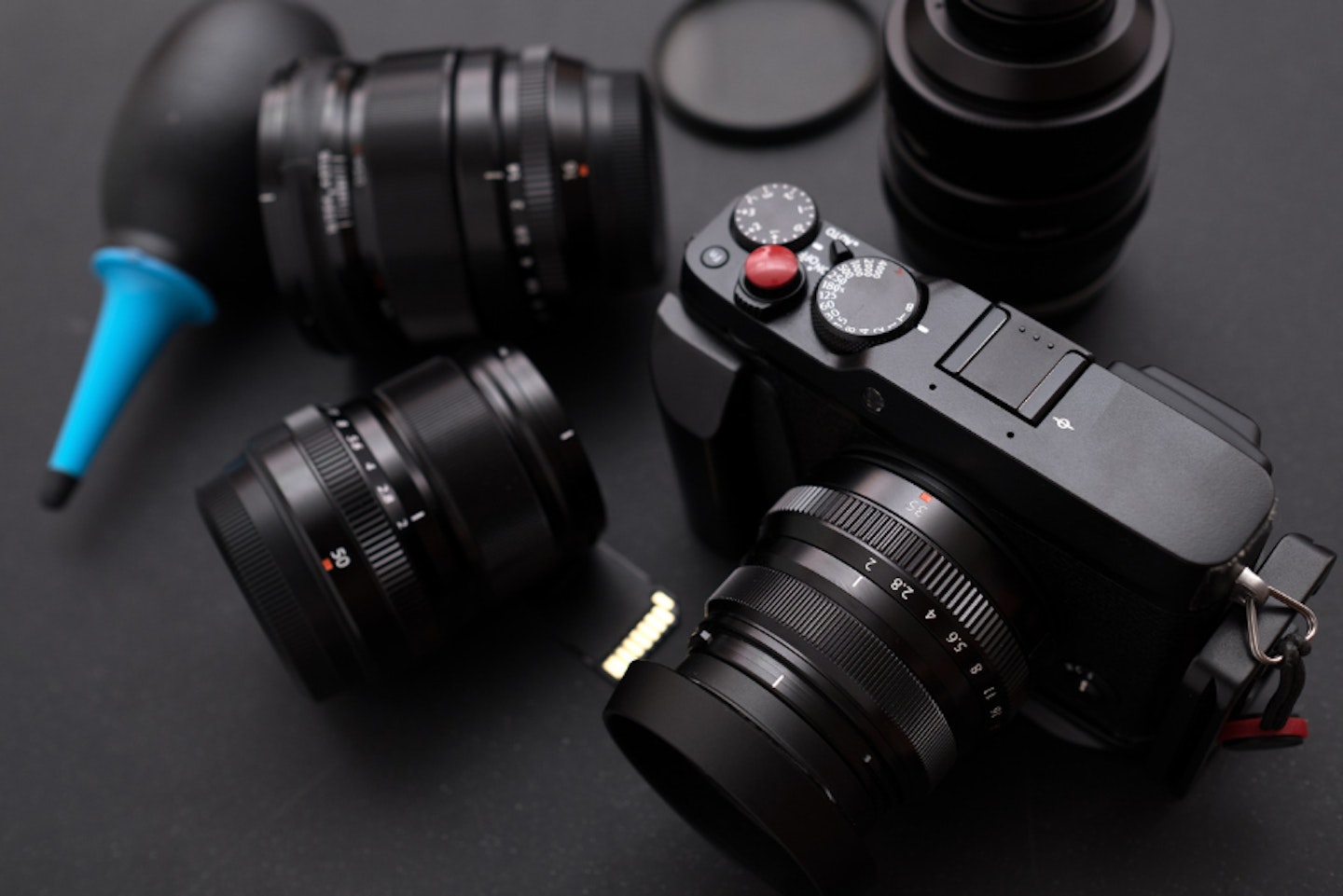
Camera jargon explained
If you're looking for a mirrorless camera, odds are you probably know a thing or two about photography, but here's a short overview of the more technical terms used in this article.
CSC (Compact System Camera)
This is another term for a mirrorless camera with interchangeable lenses. The compact mirrorless form factor often necessitates a matching range of lenses and accessories that support the system.
Zoom and prime lenses
Some lenses can be zoomed between two focal lengths, such as 18-55mm. Others are fixed to one, like 50mm, which is a prime lens. The best prime lenses tend to be on the expensive side. Users are often professionals, so the quality of the lens and advanced manufacturing methods is where the budget goes.
Full-Frame sensor
These sensors are able to capture more light per-pixel thanks to their increased size. They're the same size as a traditional 35mm film, making them the choice of many professionals. Their size also means a wider field of view, as the light reaches right to the edge of the sensor.
APS-C sensor
Despite being around 1.6 times smaller than Full-Frame, they can capture the same number of megapixels. The key difference is the physical size of the sensor. Smaller means two things: firstly, a full-frame lens will deliver a larger internal image than the sensor can see. That means the image you get will appear cropped - handy for distant objects and wildlife photography. Secondly, as it's smaller you get a lighter and more compact camera.
Micro Four-Thirds sensor
Micro Four Thirds is a system created by Kodak and Olympus. It essentially shrinks a full-size DSLR a little, whilst keeping the benefits. This means the sensor is smaller than the usual APS-C sensor, again to save space; but will retain as much professional image quality and pixel density as possible. The range of compatible lenses is excellent, as it's an open standard.
Chris Duffill is a Tech Product Writer for What's The Best. He specialises in audiovisual, computing, and gadgets. He also writes for Yours.
Subscribe to the What's The Best Newsletter to keep up to date with more of the latest reviews and recommendations from the rest of the What’s The Best team.
